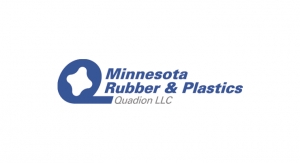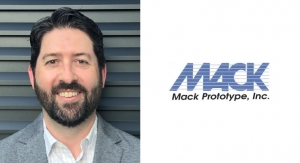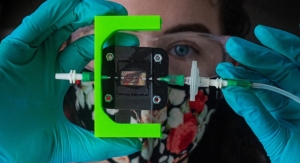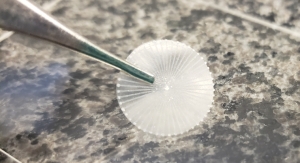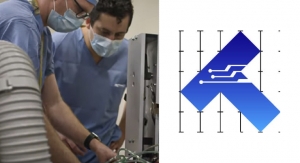Emily Newton, Editor-in-Chief, Revolutionized04.29.21
Modern technology has reshaped the medical industry for the better. New devices can improve patient treatments and save lives, providing manufacturers with a world of opportunity and heightened responsibility. Medical manufacturing can be a profitable industry, but it has to meet higher standards, too.
In light of this dynamic, prototyping is a must. While creating prototypes is standard practice across all manufacturing areas, it carries unique importance in the medical sector. It can improve profits, reduce risks, and even save lives.
There were 208.5 million recalled medical devices in the first quarter of 2018 alone. That represents a considerable monetary loss for manufacturers and a substantial threat for these products’ users. According to one study, medical devices have caused more than 1.7 million injuries since 2008.
More thorough prototyping can help reduce these risks. As you create and test new prototypes, you’ll find problems arising in situations you likely haven’t thought about. Design can then be refined at every stage, creating a safer end product.
As you build new prototypes, you’ll see if some production methods may be more efficient or affordable than others. The initial design may not be cost-effective to manufacture, and prototyping will reveal if that’s the case. Just as you adjust and refine the product design, the same can be done for its manufacturing process.
Outsourcing prototype production—often the most cost-effective option—can keep manufacturing costs to a minimum. You can find the best design and production method for a product without using in-house equipment or resources.
Prototyping makes the regulatory compliance process far smoother. Testing prototypes can reveal potential FDA violations to address before manufacturers ramp up production. Similarly, you can submit new versions to regulatory agencies to ensure they meet standards when creating the final design.
Manufacturers serving multiple countries must comply with various regulatory bodies. Prototyping enables them to design variants that meet the requirements for each region. Through this process, they could discover how to make a single product that complies with multiple nations’ standards.
The U.S. medical device market is massive, worth $156 billion in 2017 and growing. It’s easy for some products to fall behind a sea of competitors in such a booming market. Small design choices that improve ease of use or comfort can make a significant difference in an industry this competitive.
As you prototype your product, you can refine these smaller details every time you address a more severe issue. By the time the design is finalized, it’ll be both safe and more appealing to end-users.
Saving so much time in producing models will help move through prototyping phases quicker. There will be more time to edit designs and can bring a product to market earlier.
Technologies like 3D printing and CNC machining have pushed rapid prototyping to new heights. Some companies deliver prototypes in a week or less, a process that used to take months. As these manufacturing technologies improve, they’ll be able to deliver products even faster.
Machine learning algorithms can model possible scenarios that could arise with a product’s use. Similarly, they can analyze past data to suggest the fastest or most cost-effective way to manufacture a product. Using these algorithms can shorten the design and testing phases of prototyping.
Remember how powerful a tool software can be today. You can create and test digital models far faster than physical mockups. Spending more time with digital tools and testing models can help reveal flaws before investing in making a physical product. This will streamline the process in the end.
The fewer models you have to produce, the faster the process will be. Consequently, firms should make as many improvements as possible after every testing phase. Analyze each iteration of the project closely to find and fix as many issues as you can at once.
As with many other projects, collaboration is indispensable in the prototyping process. Letting various stakeholders and experts have a say will reveal paths forward that might’ve been missed. Taking a collaborative approach to design will result in better products from the beginning, reducing the changes you need to make.
Prototypes are helpful resources in any sector. With the heightened responsibility, expense, and standards of the healthcare industry, they’re essential in medical manufacturing.
 Emily Newton is the Editor-in-Chief of Revolutionized. She’s always excited to learn how the latest industry trends will improve the world. She has over four years of experience covering stories in the science and tech sectors.
Emily Newton is the Editor-in-Chief of Revolutionized. She’s always excited to learn how the latest industry trends will improve the world. She has over four years of experience covering stories in the science and tech sectors.
In light of this dynamic, prototyping is a must. While creating prototypes is standard practice across all manufacturing areas, it carries unique importance in the medical sector. It can improve profits, reduce risks, and even save lives.
1. Improving Patient Safety
By far, the most crucial purpose medical device prototyping serves is improving safety. If manufacturers rush production on a product, it could carry risks the company doesn’t even recognize. Creating and testing prototypes first helps highlight these potential dangers so the manufacturer can fix them.There were 208.5 million recalled medical devices in the first quarter of 2018 alone. That represents a considerable monetary loss for manufacturers and a substantial threat for these products’ users. According to one study, medical devices have caused more than 1.7 million injuries since 2008.
More thorough prototyping can help reduce these risks. As you create and test new prototypes, you’ll find problems arising in situations you likely haven’t thought about. Design can then be refined at every stage, creating a safer end product.
2. Minimizing Costs
Prototyping medical devices can also keep production costs low. At first, they may seem counterintuitive, as the process can increase the time to market, and redesigns could “waste” materials. What you may not realize is prototypes reveal optimal production methods, not just design flaws.As you build new prototypes, you’ll see if some production methods may be more efficient or affordable than others. The initial design may not be cost-effective to manufacture, and prototyping will reveal if that’s the case. Just as you adjust and refine the product design, the same can be done for its manufacturing process.
Outsourcing prototype production—often the most cost-effective option—can keep manufacturing costs to a minimum. You can find the best design and production method for a product without using in-house equipment or resources.
3. Ensuring Regulatory Compliance
Every industry has standards that products must meet, but the medical sector has more than most. The FDA has at least seven categories of regulatory requirements that apply to medical devices. Failure to meet these can result in hefty fines and even legal action, so compliance is crucial.Prototyping makes the regulatory compliance process far smoother. Testing prototypes can reveal potential FDA violations to address before manufacturers ramp up production. Similarly, you can submit new versions to regulatory agencies to ensure they meet standards when creating the final design.
Manufacturers serving multiple countries must comply with various regulatory bodies. Prototyping enables them to design variants that meet the requirements for each region. Through this process, they could discover how to make a single product that complies with multiple nations’ standards.
4. Optimizing Product Design
Problems with medical devices can be severe, but not every issue creates a health and safety concern. The prototyping process will reveal plenty of these smaller product flaws and give manufacturers the chance to correct them. While these may seem insignificant, addressing them helps create the best product possible.The U.S. medical device market is massive, worth $156 billion in 2017 and growing. It’s easy for some products to fall behind a sea of competitors in such a booming market. Small design choices that improve ease of use or comfort can make a significant difference in an industry this competitive.
As you prototype your product, you can refine these smaller details every time you address a more severe issue. By the time the design is finalized, it’ll be both safe and more appealing to end-users.
5. Advances in Medical Device Prototyping
Several advances in the last few years make prototyping a more efficient and effective process. 3D printing has the potential to revolutionize the medical device sector. You can create a prototype from a design in a matter of hours, saving a considerable amount of time and money.Saving so much time in producing models will help move through prototyping phases quicker. There will be more time to edit designs and can bring a product to market earlier.
Technologies like 3D printing and CNC machining have pushed rapid prototyping to new heights. Some companies deliver prototypes in a week or less, a process that used to take months. As these manufacturing technologies improve, they’ll be able to deliver products even faster.
Machine learning algorithms can model possible scenarios that could arise with a product’s use. Similarly, they can analyze past data to suggest the fastest or most cost-effective way to manufacture a product. Using these algorithms can shorten the design and testing phases of prototyping.
Making the Most of Prototypes
As crucial as prototyping is, it can take time, hindering how fast you can bring products to market. The right approach can make this process far shorter.Remember how powerful a tool software can be today. You can create and test digital models far faster than physical mockups. Spending more time with digital tools and testing models can help reveal flaws before investing in making a physical product. This will streamline the process in the end.
The fewer models you have to produce, the faster the process will be. Consequently, firms should make as many improvements as possible after every testing phase. Analyze each iteration of the project closely to find and fix as many issues as you can at once.
As with many other projects, collaboration is indispensable in the prototyping process. Letting various stakeholders and experts have a say will reveal paths forward that might’ve been missed. Taking a collaborative approach to design will result in better products from the beginning, reducing the changes you need to make.
Prototyping Is an Essential Step in Medical Manufacturing
An optimized prototyping process improves medical manufacturing in virtually every area. Manufacturers can save money, ensure compliance, produce better-selling products and, most importantly, save lives. Medical manufacturing can’t afford to ignore these benefits.Prototypes are helpful resources in any sector. With the heightened responsibility, expense, and standards of the healthcare industry, they’re essential in medical manufacturing.





